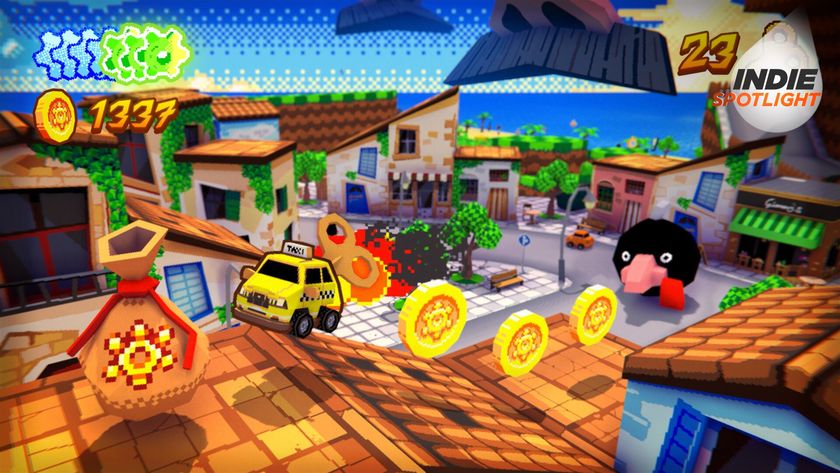Gold rush: Why do we crave lustrous loot?
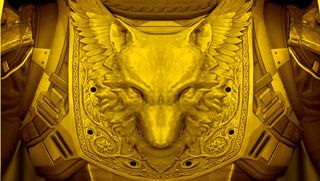
Bungie’s Destiny sees players don the heavy mantles of Guardians. These are elite champions able to focus the light of Earth’s mysterious benefactor, the Traveler, and protect the world from encroaching Darkness. Guardians are more or less immortal demigods, possessed of amazing powers, golden-age technology, and piercing tactical brilliance. This is why it was kind of weird to see entire crowds of them just standing and mindlessly firing into the mouth of a cave for hours on end.
Destiny’s fabled ‘loot cave’ says a lot about the disconnect between the fictions we’re presented with in games and the mentality of many players. Not long after launch, players figured out how to use this specific pocket of the rubble-strewn Skywatch region to exploit how the game replenished the world’s supply of enemies. Groups of Acolytes and Thralls would spawn inside the cave every six seconds and then blithely stream out to face a firing line of Guardians. Following a short and decidedly lopsided firefight, players would then mechanically reload and wait. Six seconds later, the scenario would happen again. And then again. And again. Presumably alien hoards were free to wreak havoc in all of the solar system’s less-protected regions, but players didn’t seem to care much.
The reason for this assault on a single cave in Old Russia was that any downed enemy in Destiny has a chance of dropping loot – a hexagon of light that could contain guns or gear that might make some of the numbers on a player’s character sheet ratchet up by a small amount. It wasn’t long before Bungie updated the game to break this cycle of cave farming, playfully remarking in patch notes that the enemy had “realised the futility of their endless assault on Skywatch”. The community reacted by promptly seeking new locations in which to do similar things, even if the process was a little less efficient. The draw of shooting stuff for a tiny chance of getting coveted loot was just too strong.
Destiny is hardly the only game where players engage in this kind of behaviour. Farming for loot and materials is the engine that drives just about every modern RPG, online or off. According to an infographic released by Blizzard, Diablo III players played a total of 2.8 billion hours of the game in its first year, scooping up over 544 trillion gold pieces from the ground. Eventually, Blizzard even decided to hand over the deeds to all the game’s loot farms in Adventure mode, which lets players bypass all story pretence and race through dungeons in the search for new treasures. Like Destiny’s loot cave, such farming can quickly become repetitive, unchallenging work occasionally punctuated by the thrill of hitting a jackpot. But players do it.
So why do we love loot so much that we will empty magazines into a spawn point just for a chance at it? Why can the endless grind captivate for billions of hours? Some answers lie in research on the psychology of loot drops, gambling, and the surprisingly beneficial sin of envy.
For a lot of players, the motivation to grind for loot comes down to what psychologists call operant conditioning. This is the learning technique made famous by American psychologist BF Skinner and his eponymous boxes during the early to middle part of the 20th century. Skinner showed that he could take an animal and teach it to perform a certain action by putting it in a box and giving it something enjoyable or taking away something unpleasant as a reward (technically, taking away something unpleasant is termed a negative reinforcement, but we need not get hung up on terminology). With these boxes, Skinner could teach a rat to press a lever whenever it saw a light, and even teach pigeons to play table tennis.

Perhaps unsurprisingly, ‘Skinner box’ has become widely used in game design terminology, employed with varying levels of distaste. Every dungeon in Diablo III is like a Skinner box, in that players will roam through it looking for a lever to press in the form of an elite enemy or a treasure chest, both of which usually reward them with loot. Operant conditioning creates habits by creating what psychologists call a compulsion loop. You see a cue (a lever or an elite monster), you engage in a behaviour you know will get a reward (press the lever or attack the monster), you get the reward (a tasty treat or an amazing new sword). The reward then reinforces the search for the cue again in the environment, which starts the cycle over. Of course, humans are possessed of brains that can override this kind of classical conditioning, but habits can be hard to break – especially if you’re enjoying them.
Sign up to the 12DOVE Newsletter
Weekly digests, tales from the communities you love, and more
While knowing that you’re guaranteed a loot drop of some kind from a chest or elite enemy is a pleasant draw, getting something from any random enemy or container may feel even better. The experience of casually destroying some breakable container or low-level enemy in a game only to have resplendent loot pop out is hardly unusual, but that kind of moment sticks in your head. As such, you’re likely to spend the rest of the game breaking open every barrel, vase, crate, box, urn, sarcophagus, pot, rock pile, bookcase, basket, jug, casket, bone pile, hollow log, and loose stone you come across. Even the guaranteed loot in Diablo III from an elite enemy or special chest has an element of randomness to it, because you don’t know exactly what you’ll get.
“BF Skinner’s classic work on intermittent reinforcement showed that rewards given on a variable schedule yielded more of a given behaviour,” says Nir Eyal, who has written about the topic in his book, Hooked: How To Build Habit-Forming Products, and on his website, Nir & Far. “The grind for reward drives players to keep searching and searching and searching for reward. Of course, it’s not just variability of the reward that is driving this behaviour, but the principle underlies much of the other more complex motivations of gameplay.”
This isn’t lost on developers. Games such as Diablo III and Destiny use random rewards to perform a bit of psychological judo on a system in our brain that’s critical for survival but that makes hunting for epic loot even more compulsive.
To understand that system requires a little biology. In your brain is a type of cell called a dopamine neuron. These are the bits of your grey matter responsible for monitoring levels of the pleasure-inducing chemical dopamine in order to regulate behaviour and figure out how to get more of a good thing. So when something good happens – like sex or eating delicious food or getting a legendary piece of armour – your brain releases dopamine, and you feel pleasure. The reliability of that chain of events has been an adaptive trait for our species during most of our history, linked to survival because the likes of desirable sweet, high-calorie food was often both important and rare. But what’s more, dopamine neurons play the role of trying to predict the rush we get from finding good things, and they may fire before you actually encounter the reward. Given a couple of chances, they’ll learn to light up when you hear the oven timer that precedes a batch of delicious cupcakes. This is a useful thing as far as evolutionary advantages go, since it clues you in ahead of time that something good is in the vicinity based on what events coincide with it.
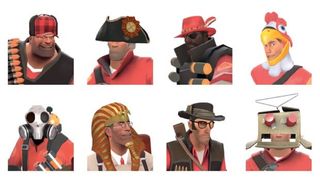
But this is only part of what makes loot-based games work so well. The real key is that while dopamine neurons will fire once your brain has figured out how to predict an event, they really get active when an unexpected gush of dopamine shows up, giving you an even bigger rush. Unanticipated cupcakes are the most wonderful cupcakes of all because our brains are wired to pay special attention to errors in our prediction systems. We weren’t predicting the reward, but it showed up. It’s like the predictive system in our brains wants to know what we missed that time, so it urges us to pay special attention to the surprise reward.
This is how slot machines and random number generators in loot systems hook you. Rather than accepting the randomness, the reward prediction system in your brain tries doggedly to learn what in the environment preceded a jackpot. Was it the time of day? The type of enemy you defeated? But in reality the reward was utterly random. More rational parts of your brain may understand this, but not the dopamine neurons and your reward prediction system. They’re stymied, but that doesn’t stop them from wanting to figure this puzzle out. So you keep playing, hoping for more experiences to draw a pattern from so that you can predict when it will happen next.
So random loot drops are the most compelling, but what about once you or your friend has some sweet new gear to show off? Loot-based games typically make sure that you can see what gear other players are sporting, often going so far as letting you inspect other players or look them up with web-based tools outside of the game. Sometimes gear is only cosmetic in nature, as in fancy hats in Team Fortress 2. Destiny, however, awards players who complete a particularly hard strike mission with the Radiant Light buff, which causes their head to be wreathed in light and advertises their feat to other players. Players often react to seeing epic loot or cosmetic touches on others with immediate, stark envy. Psychologists have studied envy and its role in motivation to perform tasks, and many of their findings are applicable to our love of loot.
In 1954, social psychologist Leon Festinger published a paper describing what he called social comparison theory. The idea, in part, is that our judgments of how satisfied we are with some of our qualities, achievements or possessions depend on comparisons against other people. Do I have a good job? Good PvP gear? According to Festinger’s theory, the answers to those questions require context. We get that context by comparing ourselves against others, and upward comparisons against people who have better situations than us can lead to envy.
In other words, you experience envy when someone has something you desire and you want to change that. Psychologists have identified two versions of this emotion. Malicious envy is when you want to solve the gap by seeing the object of envy destroyed, or taken away in order to bring them down to your level. This usually happens when you think others don’t deserve what they have. Benign envy, on the other hand, is more aspirational. It happens when you want to build yourself up to the same level. This is more likely when you think that your point of reference has worked to get what they have, or deserves it.

Envy of all kinds is usually associated with negative connotations, creating images of someone sulking and brooding over inequalities, but recent research has shown that envy can help us to feel better about ourselves and motivate us to improve performance on whatever it is we’re trying to do. Seeing another Diablo III player complete a set of ultra-rare green items might make us green with envy, but it may also make us feel more competent at the game and more motivated to complete our own set. “Comparing yourself to someone better off can give you information on how to succeed,” says Simon Laham, a social psychologist at the University Of Melbourne and author of The Science Of Sin: The Psychology Of The Seven Deadlies And Why The Are So Good For You. “You observe the secrets of others’ successes and change your expectations of what’s possible.”
Researchers have found that when we make upwards comparisons, we tend to look for and find similarities between us and our target because we have a bias towards a positive self-image. This not only broadens our perceptions of what is possible for us, it nudges us toward thinking more highly of ourselves; if they’re like you and they did it, then so can you. It also helps greatly if we can pick out (or assume) similarities on attributes obviously related to performance on the task in question.
For example, Niels Van De Ven, Rik Pieters and Marcel Zeelenberg from Tilburg University in the Netherlands did an experiment where they caused different subjects to experience the different kinds of envy. Then they had subjects take the Remote Associates Test (RAT), which measures creativity and intelligence. The RAT presents three words and then asks the candidate to think of a word that connects them. As an example, the correct answer to ‘dream, break, light’ is ‘day’. The RAT is used in this kind of research because doing well on it is partially a function of the motivation to keep thinking about a problem until you figure it out. What Van De Ven and his colleagues found was that making someone experience benign envy of a successful person before taking the RAT caused them to persist longer at solving the puzzles relative to those experiencing malicious, or no, envy. Making upwards comparisons tends to make us feel more competent by association, which motivates us to try harder. Other research has found that being envious is more motivating when the target is similar to you, but not when it seems impractical to do what they did to make you envious.
It’s no stretch to think that seeing someone with the rewards of completing a difficult in-game challenge could make us assume that we could do the same, since they’re essentially just like us and didn’t do anything we couldn’t. Or, alternatively, we may be more motivated to make in-game purchases to reduce the envy (see: ‘The envy premium’).
Loot, then, is a complex mechanic tied to multiple aspects of psychology. Benign envy can motivate us to seek out items other players have, but does so by helping us reevaluate ourselves as more competent. Once we get started, the random nature of the rewards leverages the prediction-making systems in our brain to keep us going in perpetual loops. It sounds futile, but may be no bad thing, says Nir Eyal. “We have to remember what the alternatives to these behaviours are,” he says. “Sure, it would be great if people stopped grinding online and instead went to volunteer at a homeless shelter – but that’s not what would happen if gaming disappeared.” In a way, working towards that exotic helmet may be a net positive for humanity – even if it does leave parts of the virtual galaxy undefended while you empty clips into caves.
Edge magazine was launched in 1993 with a mission to dig deep into the inner workings of the international videogame industry, quickly building a reputation for next-level analysis, features, interviews and reviews that holds fast nearly 30 years on.
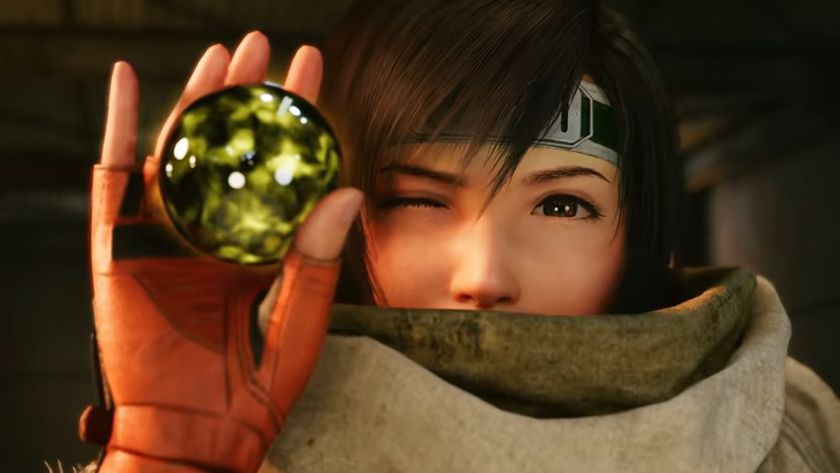
Final Fantasy 7 Remake and Rebirth battle director says combining everything he learned on Monster Hunter: World with Square Enix's technology and unique skills created a "chemical reaction"
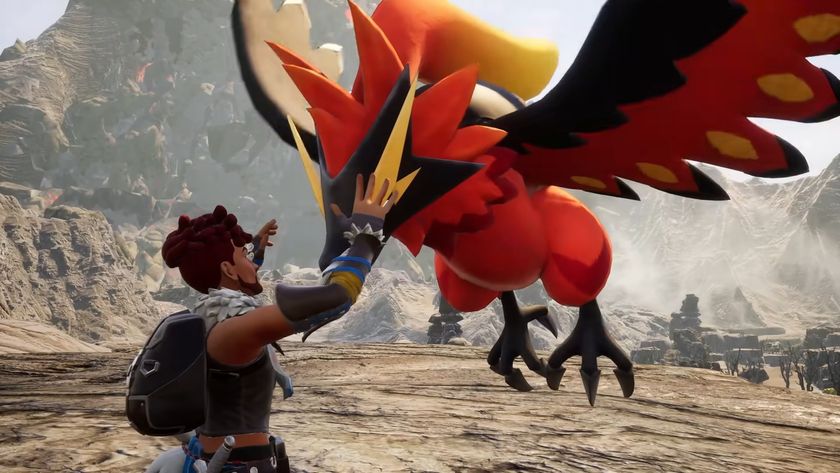
"Minutes after Palworld released," Pocketpair was already getting game pitches from "some really big names" before it even set up its own publisher: "No one has money at the moment"











